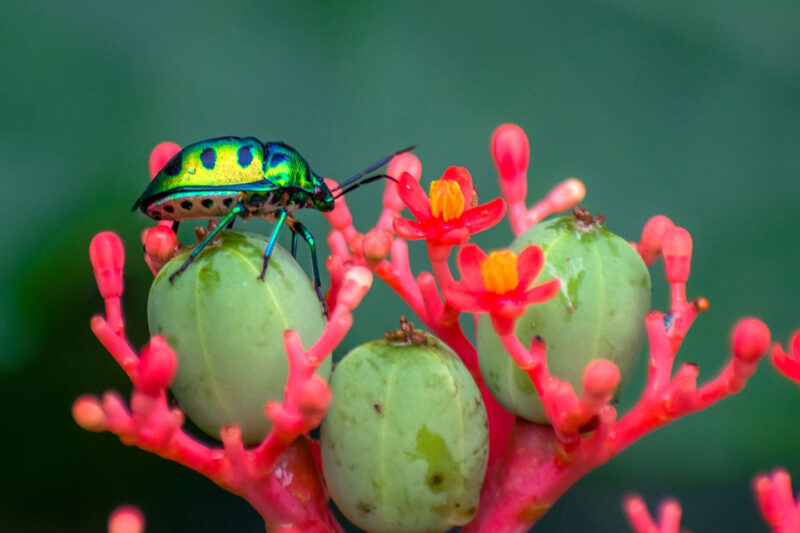Relevant Rules and Regulations
Environment impact assessment (EIA) report
Environment impact assessment (EIA) report of Chulalongkorn University’s land development project in Kaeng Khoi district of Saraburi province.
The planning and development and technical service sections of the Faculty of Science of Chulalongkorn University and relevant agencies namely the departments of biology, botany, general science and geology jointly conducted field survey of the university’s land plot in Saraburi province to study the biological and ecological diversity in plants and animals, quality of the environment and geological conditions of the area during October 2006 and December 2007.
The comprehensive field study was intended to be used for resources management and planning for future utilization of the land. The body knowledge acquired from the study could also be used for extended researches, utilization of natural resources and follow-up study of environment changes in the area.
The survey has produced a treasure of valuable information from geological conditions to plant and animal species in the area.
Geological wise, rocks at the project area are volcanic rocks, which were found to contain heavy metals and hazardous substances at a level which is unlikely to pose a threat to life forms. The area is also safe from earthquakes or landslides.
Botanical wise, 117 fern species were found, including two fern-like species, one gymnosperm species and 48 flowering species, which include edible plants, local vegetables, economic trees as well as flowering plants which can be used as decorative flowers and herbs.
There are six plant phylum and 29 families; five zooplankton phylum and 18 genus; 39 butterfly and moth species; three bee species; two stingless bee species; five white ant species; 24 ant species; five snail species; three freshwater shell species; 13 amphibian species; 15 reptile species; 93 bird species, including Spinlomis cheela, which has been listed as near-threatened species by the IUCN. No big mammas have been found.
The biological environment survey and the assessment of the ecological conditions of the project land plot have resulted to the recommendations for the university in the planning to manage the land, to rehabilitate the ecological system, to manage the area around the reservoir and water and to follow up forest changes and trees in the area as well as the drawing of the master plan for the development of the land in Saraburi.
The land in Saraburi is divided into five categories: natural conservation zone; research zone; educational zone; technical service zone and management zone.
Presently, the Network Center for Learning for the Region, which is responsible for the project area, has undertaken various activities in the area such as: the reservoir which has the capacity to store enough water to preserve ecological system in the project area through an irrigation system that goes to the community; enrichment of the area around the reservoir to serve as the source of food for people of the community to collect forest products such as mushroom, bamboo shoots, sweet vegetables and ant eggs.
The Network Center for Learning for the Region has cooperated with the departments of biology of the Faculty of Science to set up educational plots to monitor the growth of trees and changes of ecological system in the area as well as undertaking reforestation by the Center through the use of Yang Na tree saplings mixed with Ectomycorrhizal fungi and vetiver grass for soil management.
The educational plots are the model for nearby communities, state and private sectors in the rehabilitation and conservation of ecological system in the area.
The field survey has discovered forest changes from deciduous dipterocarp forest to deciduous forest and the increase of bio mass in the area, with the increase of deciduous forest at the rate of 1.1 tonnes/hectare per annum whereas the deciduous dipterocarp increases at an average rate of 4.5 tonnes/hectare per annum. This is proof of the capacity of plants in the collection of carbon dioxide underground.
The survey in 2015 found 49 species of buttery and moth, with more of them in natural conservation zone and natural study tracks than in farm area. 90 species of Bracon hebetor Say were also found with three of them as the world’s new species.
Animal diversity in the area found by team from the Department of Biology includes 18 amphibian species compared to 13 found in 2007; 153 bird species compared to 93 species found in 2007. There are also 8 bat species which are all protected species as listed In the ministerial regulation of the Wildlife Conservation and Protection Act B.E. 2535.
The discovery of a variety of animal and plant species in the project area in Saraburi reflects the importance the university has attached to the area management to ensure maximum efficiency in land utilization to the extent that it can protect and preserve the biological resources in the area for the benefit of surrounding communities on sustainable basis.
BY
Faculty of Science, Chulalongkorn University
Center of Learning for the Region, Chulalongkorn University
Others





